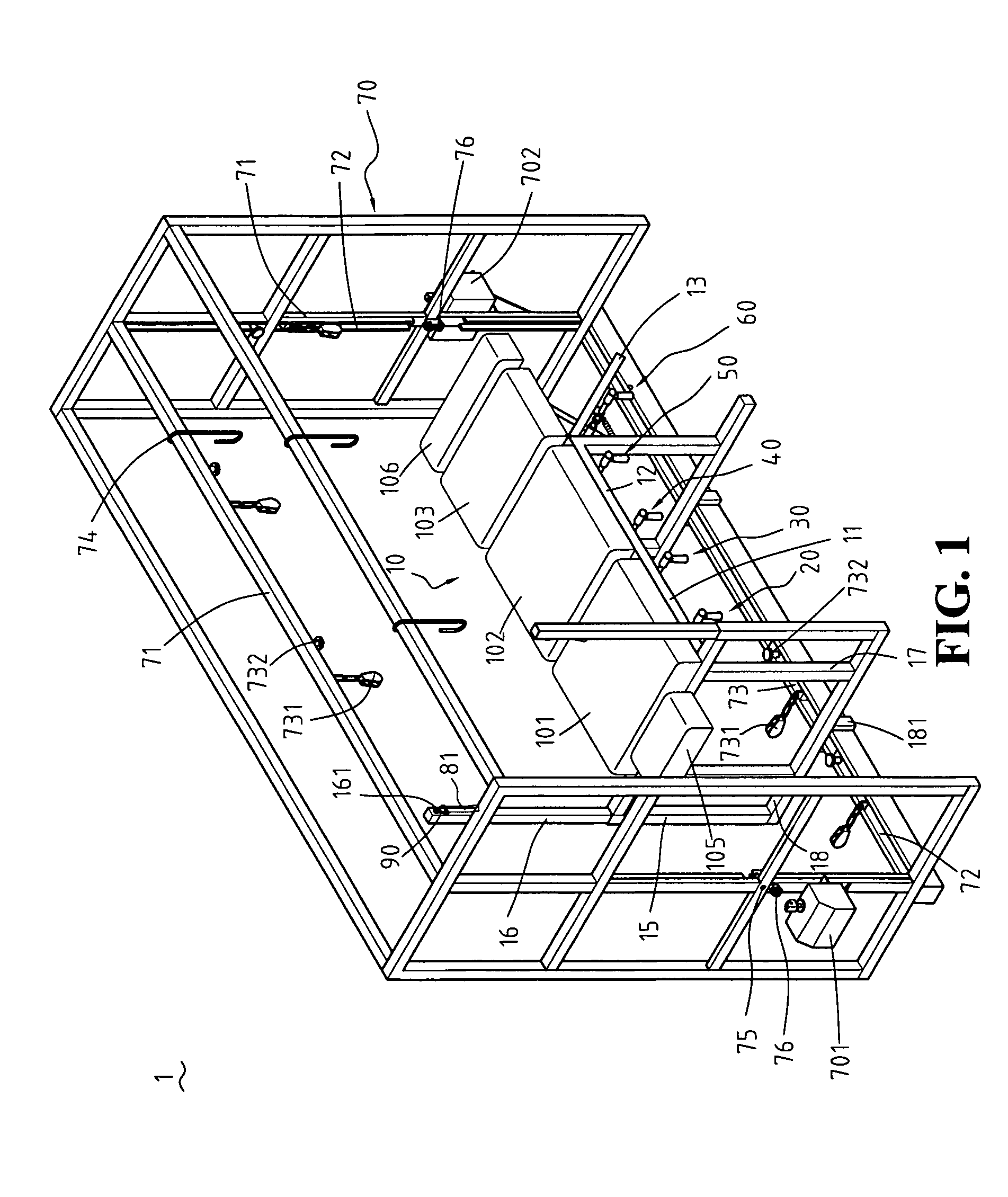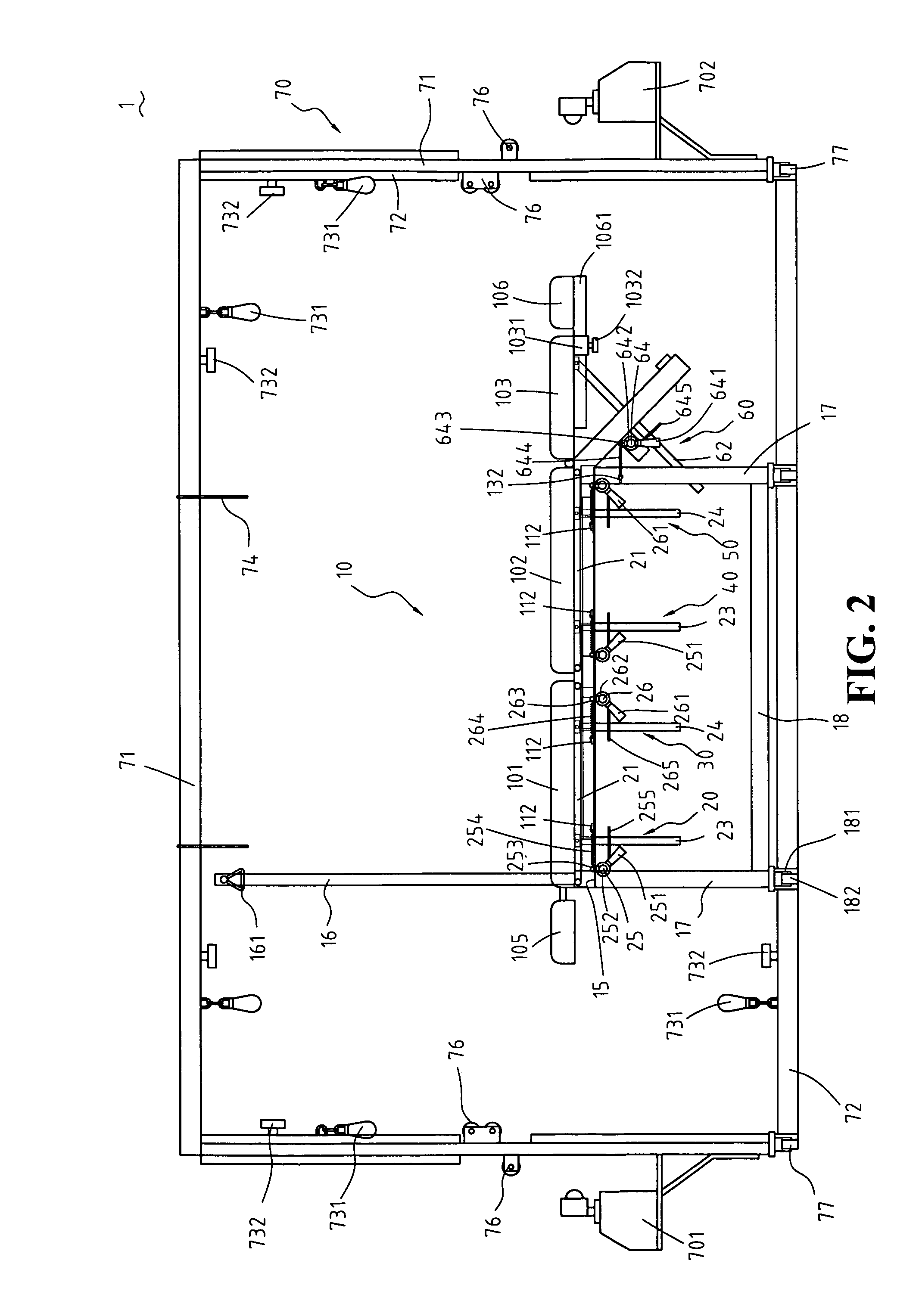Adjustable spinal rehabilitation device
a spinal rehabilitation and adjustable technology, applied in the field of adjustable spinal rehabilitation devices, can solve the problems of compromising the quality of spine-stretching rehabilitation therapy and the efficacy of rehabilitation beds, inconvenient use of rehabilitation beds, and the inability to ergonomically adjust the inclination of rehabilitation beds, so as to improve the efficacy of rehabilitation therapy.
- Summary
- Abstract
- Description
- Claims
- Application Information
AI Technical Summary
Benefits of technology
Problems solved by technology
Method used
Image
Examples
Embodiment Construction
[0022]Referring to FIG. 1 through FIG. 7, and FIG. 9, the present invention provides an adjustable spinal rehabilitation device 1, comprising: a bed frame 10, a first pad 101, a second pad 102, a third pad 103, a fourth pad 104, a head pad 105, a foot pad 106, a first elevation adjustment mechanism 20, a second elevation adjustment mechanism 30, a third elevation adjustment mechanism 40, a fourth elevation adjustment mechanism 50, a fifth elevation adjustment mechanism 60, an inverted U-shaped frame 70, a first tractor 701, and a second tractor 702. The above-mentioned are described in detail hereunder.
[0023]Referring to FIG. 1 and FIG. 2, the bed frame 10 comprises a chest-section frame 11, a belly-section frame 12, and a leg-section frame 13. The leg-section frame 13 slants downward. The bed frame 10 is flanked by rods 14 horizontally positioned (see FIG. 9). Hollow posts 15 are provided on two sides of the chest-section frame 11. Rods 16 are inserted into the hollow posts 15, res...
PUM
 Login to View More
Login to View More Abstract
Description
Claims
Application Information
 Login to View More
Login to View More - R&D
- Intellectual Property
- Life Sciences
- Materials
- Tech Scout
- Unparalleled Data Quality
- Higher Quality Content
- 60% Fewer Hallucinations
Browse by: Latest US Patents, China's latest patents, Technical Efficacy Thesaurus, Application Domain, Technology Topic, Popular Technical Reports.
© 2025 PatSnap. All rights reserved.Legal|Privacy policy|Modern Slavery Act Transparency Statement|Sitemap|About US| Contact US: help@patsnap.com



